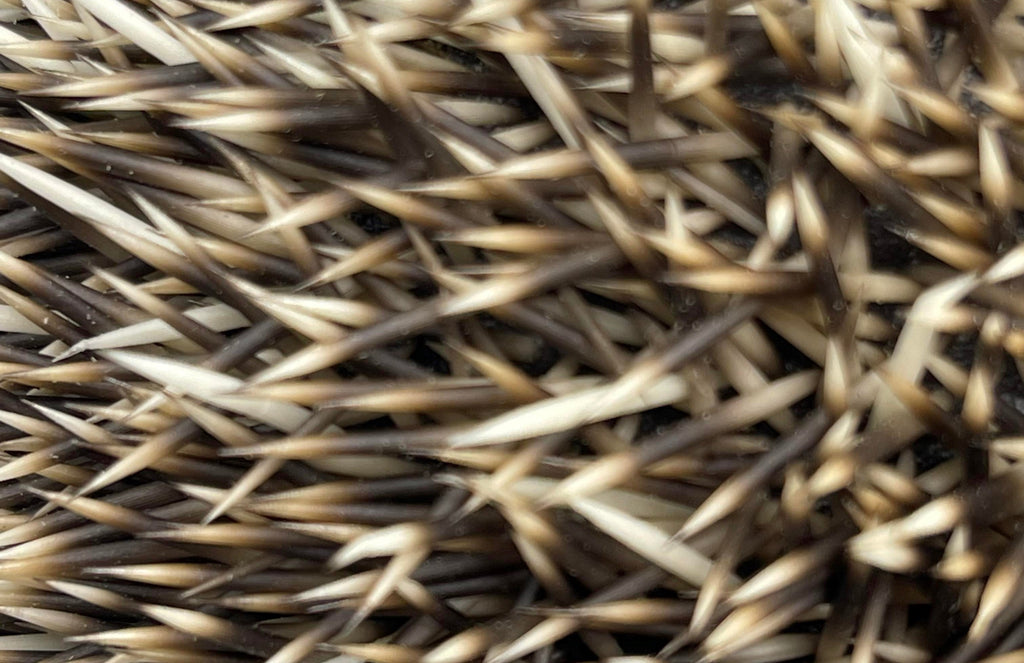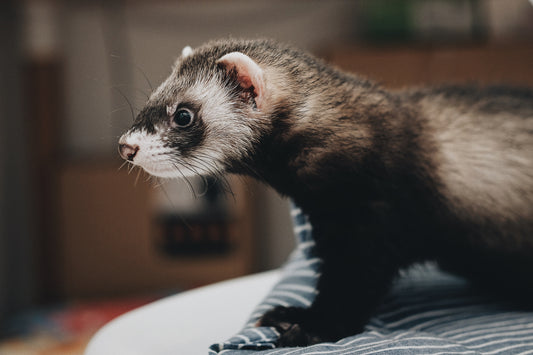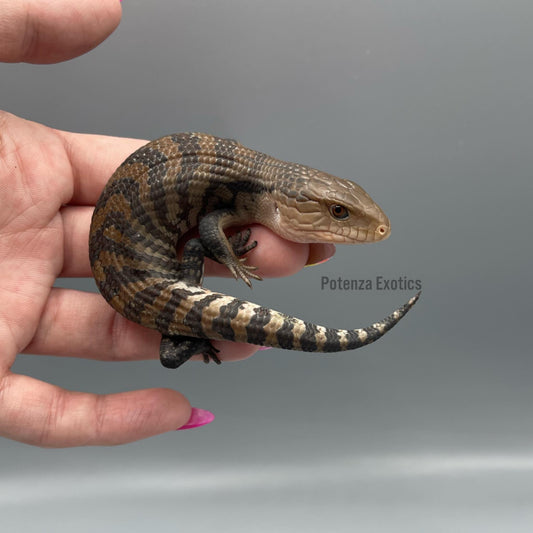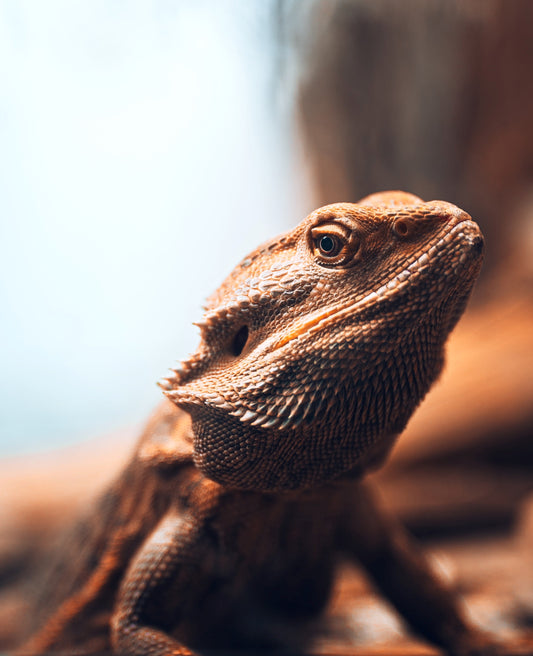If you're new to hedgehogs, you might be concerned the first time you notice your hedgehog start to lose it's quills. You might even be concerned or worried that something could be wrong.
For the most part, you have nothing to worry about. Down below we'll touch on a few of the most likely reasons your hedgehog is losing quills and explain when a vet visit may be appropriate.
To get this out of the way first, technically hedgehogs have spines not quills. There is a slight difference between the two and we'll be sure to discuss it. But most of us in the hobby will generally use the two terms interchangeably.
But lets get right into it!
What is Quilling?
Quilling is the natural process of a hedgehog shedding their baby quills in exchange for new ones. This tends to begin when the hedgehogs reaches about 6-8 weeks in age.
This is a total normal step in the growing process. Think of it just like how humans lose their baby teeth as their larger adult teeth grow in. Hedgehogs need these adult quills to protect them from predators found in wild.
During this time you may start to see a fairly larger number of quills start to fall out and new larger quills grow in.
How Long Does Quilling Last?
Many tend to link quilling to two separate periods in a hedgehogs life. The first beginning around 6-8 weeks and second around 4-6 months of age. However, these two periods can often overlap one another.
We generally refer to the quilling process and a single event lasting roughly 6 months. It has been known to last longer, but around 6 months is far more common.

Is Quilling Painful?
The quilling process will at best be irritating and at worst quite painful. During this time you may see it reflected in their attitude and behavior. Some may huff and puff, ball up or just overall take longer to relax with you.
Overall, they'll just be a bit grumpy and that's completely normal!
What is essentially happening is a new, larger quills are being pushed through tiny holes in their skin. Hedgehogs with coarser quills will experience even more pain than normal as these quills emerge.
Despite this, you'll want to continue handling them during their quilling. They need to familiarize themselves to your scent and acclimate to being handled. Just be sure to avoid "petting" them during this time.
We want to hold them but let's also try to cause irritating their quills further.
How to Help or Soothe Quilling Pain?
Luckily, there are a couple things to help them along the quilling process and hopefully soothe away some of that pain.
One of the simplest ways to help them with the itchiness and pain is through a nice bath. We've actually written an entire post about how to safely bathe your hedgehog, but it's pretty straight forward.
You'll want to stick to either an oatmeal bath or using Aveeno Oat Baby Shampoo. If using oatmeal, you'll grab some standard uncooked oatmeal from your local grocery store and stuff it inside a sock.
You'll then squish the sock in the sink and watch as the water starts to get cloudy. The oatmeal can really help in soothing the pain away and lessen the itchiness they're feeling. Just be sure to bathe them no more than once per month.
You may also hear others recommend using oil as an another alternative. Despite this, we would advise you avoid applying oils of any kind to their skin. This oil could clog pores, trap bacteria, and lead to fungal infections later down the line.
How Many Quills Should a Hedgehog Lose Per Day?
The average hedgehog can have somewhere between 5,000 - 7,000 quills on their body at any given time. Throughout their lives, they will lose and replace roughly 90% of those quills.
During the quilling process they can lose as many as 20 quills per day, but once they reach adult hood this should drastically decrease. If you notice excessive quill loss into adulthood it could be a sign of a health issue or mites.
There are several home remedies, but if you notice either of these please take your hedgehog to see a veterinarian or consult your breeder.
Do Hedgehogs Have Quills or Spines?
Despite the two terms being used interchangeably, quills and spines are actually two different things. Spines are generally defined as hairs that are modified into a hardened spike. Quills on the other hand have a spongy core, incredibly sharp tips and are generally barbed to lodge themselves in would be attackers.
Although we might use the two terms synonymously, hedgehogs do in fact have spines. These spines are simply modified hairs made of keratin, the same building material as finger nails, horns, and claws.
You would instead find quills on animals like porcupines. These quills still being used as a layer of defense, but much more menacing.
Despite the two being different, most of us in the hobby will still refer to them as quills when discussing hedgehogs. If you see it mentioned there's no need to be concerned, hedgehogs spines are very different than a porcupines.
They may be a bit prickly sometimes, but a hedgehog spine should never the skin.
Conclusion
Losing quills is a completely normal part of a hedgehogs growth and necessary for their overall safety. It can be a bit concerning when you notice your hedgehog begin losing quills, but it's nothing to worry about.
There are times when this can indicate a particular health condition or other underlying issues that need to be addressed. For those a vet visit will likely be required, but should not be a common occurrence.
If you've done your research and decided a hedgehog would make a good addition to your family, you can see all of our available hedgehogs here.




